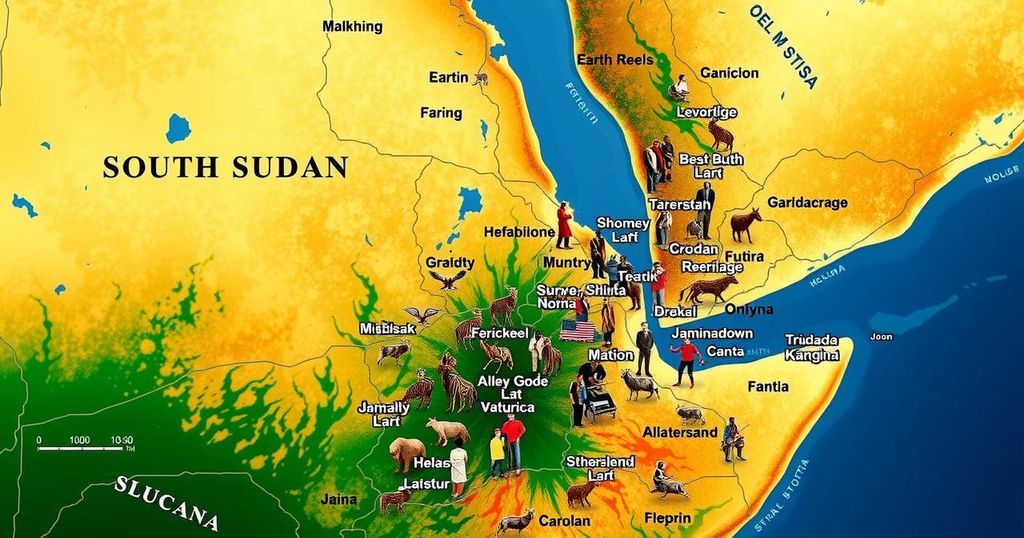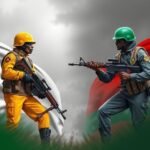Understanding South Sudan: History, Geography, and Development Challenges
South Sudan, an independent nation since July 9, 2011, is situated in northeastern Africa, characterized by rich biodiversity and a history of conflict stemming from cultural and religious differences. Its major geographical features include vast plains drained by the Nile River and the prominent Imatong Mountains, home to the country’s highest peak. The economic potential of the land is tempered by historical challenges and socio-political complexities.
South Sudan, located in northeastern Africa, is characterized by its diverse ecosystems, which include savannas, swamplands, and rainforests supporting various wildlife species. Established as an independent nation on July 9, 2011, after parting from Sudan, South Sudan has a rich history marked by cultural conflicts and civil wars, primarily instigated by differences in religion and governance between the predominantly Christian south and the Muslim north. The capital city is Juba, and the population is estimated at approximately 15.25 million in 2024, predominantly speaking English. The tumultuous history of South Sudan commenced post the invasion by Muhammad Ali in 1820, which led to slavery and a lack of modernization in the south compared to the north. Following independence from British-Egyptian rule in 1956, tension escalated as northern governance sought to impose Islamic law, leading to a protracted civil war. The Comprehensive Peace Agreement of 2005 ultimately facilitated a referendum resulting in the declaration of independence in 2011. The geographical landscape of South Sudan comprises extensive plains and plateaus, primarily drained by the Nile River and its tributaries, with the central region featuring the considerable swamp of Al-Sudd. The country’s topography includes the Ironstone Plateau and the towering Imatong Mountains, which encompass Mount Kinyeti, the highest point in South Sudan. It is essential to note that while various drainage projects have been proposed, including the Jonglei Canal, these have often been hindered by ongoing conflicts and policy hesitance. The soils found in South Sudan are primarily alkaline clay, particularly in the southern plains. This distinct soil composition and the presence of wetlands present both challenges and opportunities for agriculture. Despite being initially sidelined during the country’s struggles, there are ongoing discussions surrounding agricultural development in these areas, which could lay a foundation for economic growth if managed effectively.
To comprehensively understand the current landscape of South Sudan, it is crucial to consider the historical and cultural context that shaped the nation. South Sudan was once part of Sudan but gained its independence following years of conflict rooted in differences between its predominantly Christian and animist populations and the largely Muslim north. The differentiation in developmental focus and governance under British-Egyptian rule further exacerbated these tensions. The establishment of South Sudan as an independent nation was a result of a complex interplay of political negotiations, civil strife, and the recognition of its unique cultural identity.
In summary, South Sudan’s journey towards independence is deeply intertwined with its historical conflicts and cultural richness. Understanding the geographical and socio-political landscape is vital for comprehending the challenges the nation faces today. Moreover, the natural resources and soils present in South Sudan offer both obstacles and potential pathways for its future development, emphasizing the need for strategic governance and international cooperation to foster growth and stability.
Original Source: www.britannica.com








Post Comment